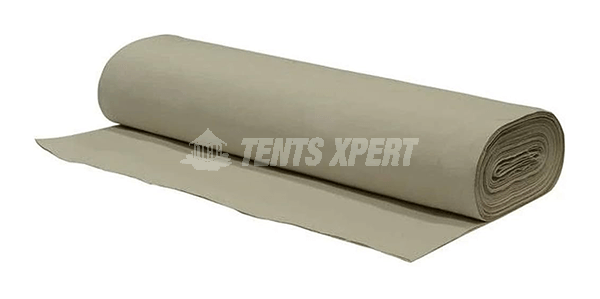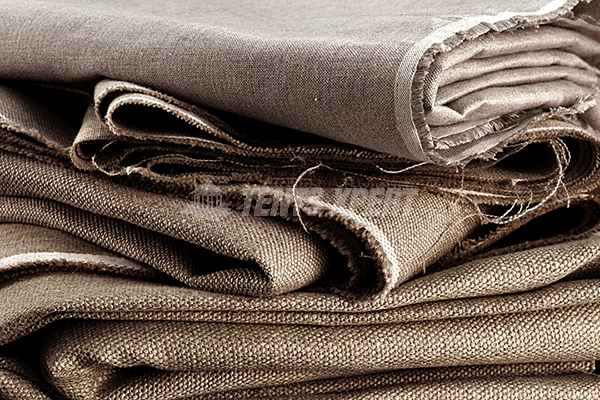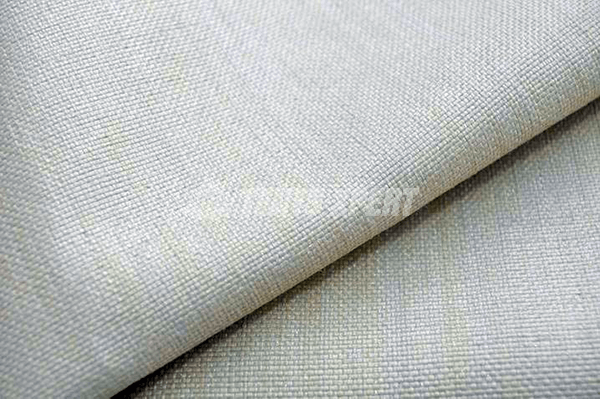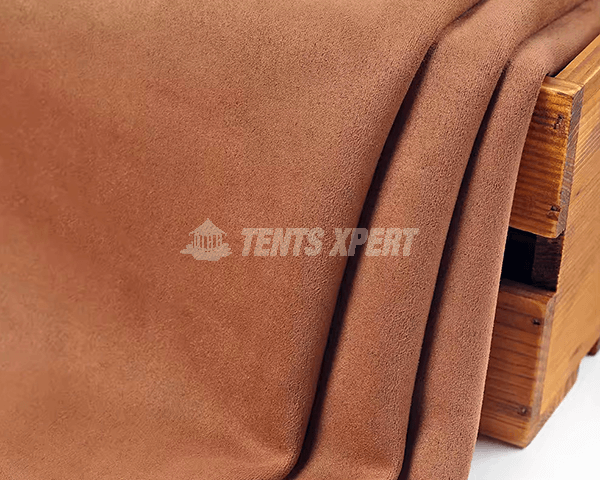Mar. 18, 2024
Canvas is a versatile fabric that has been favored by artists, artisans, and enthusiasts for centuries, and it offers a range of options to meet different needs and preferences. Whether you're an artist seeking the perfect surface for your masterpiece or an outdoor enthusiast looking for lasting protection, it's important to understand the different types of canvas. Let's embark on a journey into the realm of canvas and explore the unique qualities and applications of these canvas fabrics.
There are two main ways to categorize canvas: by material and by format. Today we will introduce the types of canvas categorized by material. Then there are two main ways to categorize canvas according to materials: Natural Fibers and Synthetic Fibers.
Cotton Canvas: The most common and affordable choice, offering a good balance of absorbency, texture, and versatility for acrylics and oils.
Linen Canvas: Considered the premium choice, known for exceptional strength, durability, smooth texture, and superior absorption ideal for oil paintings and heirloom pieces.
Synthetic Canvas (Polyester Canvas): A budget-friendly option with good durability and water resistance, suitable for acrylic paintings, outdoor applications (tents, awnings), printed canvas, and banners.
Synthetic Blend Canvas (Poly-Cotton Canvas): Combines affordability, durability, and some water resistance with a range of textures depending on the cotton-polyester ratio. Well-suited for acrylic paintings, outdoor applications (with water resistance treatment), and mixed-media artwork.
Cotton canvas is the most popular and widely used type of canvas. It is made from cotton fibers and is known for its durability, affordability, and flexibility. The term "canvas" usually refers to heavy-duty plain weave fabrics, and when cotton is the primary material, it is referred to as cotton canvas. Cotton canvas is available in different weights, such as lightweight, medium-weight, and heavy-weight, depending on the intended use.

Affordable: Compared to linen canvas, cotton is significantly less expensive, making it a budget-friendly option.
Good Texture: The natural texture of cotton provides a good "tooth" for gripping paint, allowing for a variety of painting techniques.
Wide Availability: Cotton canvas comes in a wide variety of weights, textures, and ready-made formats such as stretched canvas and canvas panels. You'll find it readily available at most art supply stores.
Versatility: Cotton canvas can be used with a variety of paints, including acrylics, oils, and even tempera.
Absorbency: Cotton canvas can be quite absorbent, so some priming may be necessary to create a barrier and prevent excessive paint from soaking into the fabric.
Longevity: Although durable, cotton canvas may not hold up as well over time as linen canvas, which is known for its exceptional longevity.
Cotton canvas fabric is used in a wide variety of applications due to its durability, versatility, and natural properties. Some common uses of cotton canvas fabric include:
Art and Painting: Cotton canvas is a popular choice for artists and painters. It provides a suitable surface for painting with various media such as oil paints, acrylics, watercolors and more. Stretched cotton canvas or canvas panels are often used as a base for creating artwork.
Bags and Accessories: Cotton canvas is widely used to make bags, backpacks, totes, and other accessories. Its strength and durability make it suitable for carrying heavy loads, and its natural composition provides a breathable and comfortable material for everyday use.
Upholstery and home furnishings: Cotton canvas is used in upholstery for furniture, pillows and curtains. It provides a strong and durable fabric option that can withstand wear and tear. Cotton canvas can also be used to make slipcovers, tablecloths and other home decor items.
Outdoor and Recreational Equipment: Cotton canvas, particularly a heavier weight known as "duck canvas," is commonly used for outdoor and recreational equipment. This includes tents, awnings, hammocks and outdoor furniture covers. Its durability and resistance to weather conditions make it suitable for outdoor applications.
Apparel and Fashion: Cotton canvas is used in the fashion industry to create garments such as jackets, pants, skirts and dresses. It provides structure and durability to garments, especially when a stiffer or heavier fabric is desired. Cotton canvas is also used to make shoes and hats.
Crafts and DIY projects: Cotton canvas is a popular choice for various craft projects. It can be used for sewing projects such as aprons, oven mitts, and fabric baskets. It can also be painted, dyed, or used as a base for embroidery and other textile crafts.
Linen canvas is made from flax fibers and is considered a premium option for artists. It is known for its strength, durability, and smooth surface. Linen canvas is often preferred by professional artists for its superior quality, although it tends to be more expensive than cotton canvas.

Strength and Durability: Linen fibers are stronger and more durable than cotton, making linen canvas ideal for large-scale artworks and pieces that will be treasured for generations.
Superior Absorption: Linen's tighter weave absorbs paint more evenly, reducing the need for excessive priming. This allows the paint to retain its vibrancy and true colors.
Smooth Texture: Linen canvas typically has a smoother surface compared to cotton canvas. This makes it ideal for detailed work, such as portraits or realistic paintings.
Longevity: Linen canvas is known for its exceptional longevity and resistance to warping or sagging over time. This makes it a valuable investment for serious artists.
Cost: Linen canvas is significantly more expensive than cotton canvas. Less Widely Available: Linen canvas might not be as readily available as cotton canvas, especially in pre-made formats like stretched canvas.
Potential for Slack: Due to its smooth, tight weave, linen canvas can be more prone to slacking (developing loose areas) if not stretched properly.
Oil Paintings: Linen's superior absorbency and smooth texture make it ideal for oil paintings, allowing for rich color application and fine detail.
Heirloom Artwork: Because of its durability, linen canvas is often chosen to create treasured pieces that will be passed down through generations.
Detailed Artwork: The smooth surface is perfect for artists who work in a detailed style, such as realism or portraiture.
Synthetic canvas refers to a type of canvas fabric that is made entirely from synthetic fibers, without the inclusion of natural fibers like cotton or linen. Synthetic fibers commonly used in the production of synthetic canvas include polyester, nylon, acrylic, or a blend of these materials.

Affordable: Similar to cotton canvas, synthetic canvas is a budget-friendly option, making it a great choice for beginners or cost-conscious artists.
Durable: Synthetic fibers are typically strong and resistant to tearing, mold, and mildew. This can be an advantage in humid environments or for outdoor applications.
Water-resistant: Some types of synthetic canvas are treated to be water-resistant, making them suitable for tents, awnings, or even outdoor furniture.
Easy Maintenance: Polyester canvas, the most common type of synthetic canvas, is generally easier to clean and maintain than natural fibers such as cotton or linen.
Less Absorbent: Unlike natural fibers, synthetic canvas absorbs paint less readily. This can affect the application and vibrancy of some paints, especially oils.
Less Texture: Synthetic canvas typically has a smoother texture than cotton canvas. While this can be a plus for some applications, it may not be ideal for techniques that rely on a toothed surface for paint adhesion.
Environmental Impact: Synthetic materials such as polyester are derived from petroleum and have a larger environmental footprint compared to natural fibers.
Outdoor Covers and Awnings: Synthetic canvas is widely used for outdoor covers, including vehicle covers, boat covers, and furniture covers. Its water resistance, UV resistance, and durability make it ideal for protecting items from the elements.
Tents and Camping Equipment: Synthetic canvas is commonly used in the manufacture of tents, tarps and other camping equipment. Its strength and resistance to tearing and abrasion make it ideal for withstanding harsh outdoor conditions.
Bags and Backpacks: Synthetic canvas is a popular choice for making bags, backpacks and luggage. Its durability, water resistance and color stability make it suitable for carrying heavy loads and withstanding frequent use.
Art and Printing: Synthetic canvas is used in the art world to create canvas prints, wall art and banners. Its color stability, smooth surface, and compatibility with digital printing techniques make it ideal for producing vibrant, high-resolution artwork.
Industrial Applications: Synthetic canvas is used in industrial applications such as conveyor belts, filtration fabrics, and protective covers. Its strength, chemical resistance and durability make it suitable for demanding industrial environments.
Fashion and Apparel: Synthetic canvas is used in the production of fashion and apparel items such as jackets, shoes, and accessories. Its durability, water resistance and ease of care make it suitable for creating functional and stylish clothing.
Synthetic blend canvas combines natural fibers such as cotton or linen with synthetic fibers such as polyester. The specific blend can vary, but common combinations include polyester and cotton or polyester and linen. This blend is designed to provide the best qualities of both materials, such as the strength of synthetic fibers and the texture of natural fibers. Synthetic blend canvas can be a cost-effective option that offers a balance between performance and affordability.

Budget-Friendly: Similar to cotton canvas, the synthetic blend is an affordable option, making it a good choice for beginners or cost-conscious artists.
Durable: The blend incorporates the strength and tear resistance of polyester, resulting in a more durable canvas than pure cotton.
Water Resistance: Certain synthetic blends may have a water-resistant treatment, which can be beneficial for applications such as awnings, bags, or outdoor furniture cushions.
Versatility:The texture of synthetic blends can vary depending on the cotton/polyester ratio. This allows it to accommodate a variety of painting techniques using acrylics or oils.
Balanced Absorption: The blend offers a middle ground between the high absorbency of cotton and the lower absorbency of polyester, potentially reducing the need for excessive priming prior to painting.
Variability: Because the specific ratio of cotton to polyester can vary, the texture, absorbency, and suitability for different paints can also vary. It's important to check with the manufacturer for specifics.
Environmental Impact: While potentially less impactful than pure polyester canvas, the use of synthetic materials still contributes to a larger environmental footprint compared to natural fibers.
Longevity: The longevity of synthetic blends may not match that of pure linen canvas, especially when exposed to harsh weather conditions or outdoor elements.
Art and Painting: Synthetic blend canvas can be used as a painting surface for artists. The blend of synthetic and natural fibers provides a balance of durability and paint absorbency, making it suitable for different painting mediums like oils, acrylics, and watercolors.
Bags and Accessories: Synthetic blend canvas is commonly used for creating bags, backpacks, and accessories. The synthetic component adds strength and durability, while the natural fibers contribute to the fabric's aesthetic qualities and comfort.
Home Decor and Upholstery: Synthetic blend canvas can be used for upholstery projects, such as furniture covers, cushions, and curtains. The blend of fibers provides a combination of durability and a natural look for interior decor applications.
Outdoor Use: Synthetic blend canvas, particularly those with a higher percentage of synthetic fibers, can be suitable for outdoor applications. The synthetic component enhances the fabric's resistance to moisture, UV rays, and mold, making it suitable for outdoor furniture, cushions, and covers.
Crafts and DIY Projects: Synthetic blend canvas is often chosen for various craft projects. It can be used for creating tote bags, pouches, and other fabric-based DIY items that require a balance of durability and aesthetic appeal.
From the timeless elegance of linen canvas to the reliable durability of synthetic options, the world of canvas materials offers a canvas for every purpose. Whether you're an artist, an outdoor enthusiast, or looking for canvas for industrial applications, understanding the different types of canvas will help you make the perfect choice. Explore the possibilities and unlock the potential of canvas in your creative, practical, and adventurous endeavors.

Chat Now